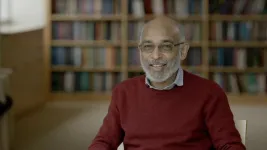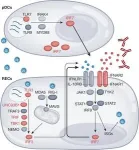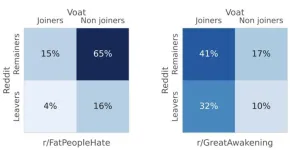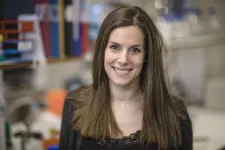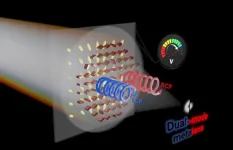(Press-News.org) If anesthesiologists had a rigorous means to manage dosing, they could deliver less medicine, maintaining exactly the right depth of unconsciousness while reducing postoperative cognitive side effects in vulnerable groups like the elderly. But with myriad responsibilities for keeping anesthetized patients alive and stable, as well as maintaining their profoundly unconscious state, anesthesiologists don’t have the time without the technology.
To solve the problem, researchers at The Picower Institute for Learning and Memory at MIT and Massachusetts General Hospital have invented a closed-loop system based on brain state monitoring that accurately controls unconsciousness by automating doses of the anesthetic drug propofol every 20 seconds.
The scientists detail the new system and its performance in animal testing in a new study in the journal PNAS Nexus.
“One of the ways to improve anesthesia care is to give just the right amount of drug that’s needed,” said corresponding author Emery N. Brown, Edward Hood Taplin Professor of Medical Engineering and Computational Neuroscience at MIT and an anesthesiologist at MGH. “This opens up the opportunity to do that in a really controlled way.”
In the operating room, Brown monitors the brain state of his patients using electroencephalograms (EEGs). He frequently adjusts dosing based on that feedback, which can cut the amount of drug he uses by as much as half compared to if he just picks a constant infusion rate and sticks with that. Nevertheless, the practice of maintaining dose rather than consciousness level is common because most anesthesiologists are not trained to track brain states and often don’t take time in the operating room to precisely manage dosing.
The new system is not the first closed-loop anesthesia delivery (CLAD) system, Brown said, but it advances the young field in critical ways. Some prior systems merely automate a single, stable infusion rate based on general patient characteristics like height, weight and age but gather no feedback about the actual effect on unconsciousness, said Brown, who is also a member of the Institute for Medical Engineering and Science at MIT and the Warren Zapol Professor in Harvard Medical School. Others use a proprietary control system that maintains “black box” markers of unconsciousness to vary within a wide range.
The new CLAD system, developed by Brown and his team at the MIT and MGH Brain Arousal State Control Innovation Center (BASCIC), enables very precise management of unconsciousness by making a customized estimate of how doses will affect the subject and by measuring unconsciousness based on brain state. The system uses those measures as feedback to constantly adjust the drug dose.
In the paper, the team demonstrates that the system enabled more than 18 hours of fine-grained consciousness control over the course of nine anesthesia sessions with two animal subjects. Brown Lab research affiliate Sourish Chakravarty and Jacob Donoghue, a former graduate student from the lab of co-senior author and Picower Professor Earl K. Miller, are the paper's co-lead authors.
Though there is more work to do, the authors write, “We are highly optimistic that the CLAD framework we have established…can be successfully extended to humans.”
How it works
A foundation of the CLAD technology is that it employs a physiologically principled readout of unconsciousness from the brain (in the OR, anesthesiologists typically rely on indirect markers such as heart rate, blood pressure and immobility). The researchers established their brain-based marker by measuring changes in neural spiking activity amid unconsciousness in the animals and the larger scale rhythms that spiking produces, called local field potentials (LFPs). By closely associating LFP power with spiking-based measures of unconsciousness in the animal subjects, they were able to determine that the total power of LFPs between 20 and 30 Hz is a reliable marker.
The researchers also built into the system a physiologically principled model of the pharmacokinetics (PK) and pharmacodynamics (PD) of propofol, which determines how much drug is needed to alter consciousness and how fast a given dose will have that effect. In the study they show that by coupling the model with the unconsciousness marker they could quickly tune the model for each subject.
“With a few basic recordings of the LFPs as drug is administered you can quickly learn how the subject is responding to the drug,” Brown said.
To manage propofol dosing, every 20 seconds a “linear quadratic integral” controller determines the difference between the measured 20-30 Hz LFP power and the desired brain state (set by the anesthesiologist) and uses the PK/PD model to adjust the infusion of medicine to close the gap.
Initially the team ran computer simulations of how their CLAD system would work under realistic parameters, but then they performed nine, 125-minute-long experiments with two animal subjects. They manually put the animals under and then let the CLAD system take over after about 30 minutes. In each case the CLAD had to bring the animals to a precise state of unconsciousness for 45 minutes, change to a different level for another 40 minutes, and then bring them back to the original level for 40 more minutes. In every session the system kept the marker very close to the goal levels throughout the duration of the testing.
In other words, rather than a system that automatically maintains the drug dose, the new system automatically maintains the desired level of unconsciousness by updating that dose every 20 seconds.
“The common practice of using constant infusion rates can lead to overdosing,” the researchers wrote. “This observation is particularly relevant for elderly patients who at standard propofol infusion rates readily drift into burst suppression, a profound level of unconsciousness associated with post-operative cognitive disorders.”
Still to do
In the study the team acknowledges that they have more work to do to advance the technology for human use.
One needed step is basing the system on EEGs, which can be measured via the scalp. Along with that the team will need to determine a marker of unconsciousness based on EEG measurements of human brain rhythms, rather than animal LFPs. Finally, the team wants to extend the system’s capabilities so that it not only maintains unconsciousness, but also helps induce it and helps bring patients back to wakefulness.
In addition to Brown, Chakravarty, Donoghue and Miller, the paper’s other authors are Ayan Waite, Meredith Mahnke, Indie Garwood, Sebastian Gallo.
Funding for the study came from the National Institutes of Health Awards P01 GM118269 and R01 NS123120 (to E.N.B.), the JPB Foundation and the Picower Institute for Learning and Memory. Support for BASCIC comes from George J. Elbaum (MIT ’59,SM’63, PhD ’67), Mimi Jensen, Diane B. Greene (MIT,SM’78), Mendel Rosenblum, Bill Swanson and Cheryl Swanson.
END
Anesthesia technology precisely controls unconsciousness in animal tests
An advanced closed-loop anesthesia delivery system that monitors brain state to tailor propofol dose and achieve exactly the desired level of unconsciousness could reduce post-op side effects
2023-10-31
ELSE PRESS RELEASES FROM THIS DATE:
The limits of deplatforming
2023-10-31
Social media can incubate communities that are so resilient that even banning them from the platform cannot destroy them. Michele Starnini and colleagues studied two online communities on the social media site Reddit: the far-right conspiracy theory subreddit GreatAwakening, which was banned in 2018, and the hate-speech subreddit FatPeopleHate, banned in 2015. Both communities decided amongst themselves to move to Voat, an unmoderated Reddit clone designed to serve those banned by Reddit. The authors estimate that less than 20% of FatPeopleHate users migrated to Voat, while more than 70% of GreatAwakening users migrated to the new platform. This result suggests that members ...
CCDC expands global talent pool with Ghana-based Orgmento
2023-10-31
· CCDC extends its partnership with Orgmento, a Ghanaian software engineering and data sciences company.
· The partnership, which started in 2021, has been strengthened by the shared commitment to engineering excellence from both organizations, and has now been extended for a further 3 years.
· Software engineering teams from the CCDC and Orgmento will build software to advance structural science.
Cambridge, UK. 31 October 2023
The Cambridge Crystallographic ...
DNA organization influences the growth of deadly brain tumors in response to neuronal signals
2023-10-31
A pioneering study at Umeå University, Sweden, has unveiled that the 3D organization of DNA can influence the progression of the aggressive brain tumour known as glioblastoma. Having identified the factors that glioblastoma uses to respond to neurons by growing and spreading, this discovery paves the way for further research into new treatments for brain tumours.
"We have now identified the most important factors behind how the tumour responds to nerve cells, thus becoming more dangerous. These findings offer hope in our long-term battle against this difficult-to-treat ...
Humans are disrupting natural ‘salt cycle’ on a global scale, new study shows
2023-10-31
The planet’s demand for salt comes at a cost to the environment and human health, according to a new scientific review led by University of Maryland Geology Professor Sujay Kaushal. Published in the journal Nature Reviews Earth & Environment, the paper revealed that human activities are making Earth’s air, soil and freshwater saltier, which could pose an “existential threat” if current trends continue.
Geologic and hydrologic processes bring salts to Earth’s surface over time, but human activities such as mining and land development are rapidly accelerating the natural “salt ...
Want to prevent misinformation? Present data with an interactive visual.
2023-10-31
Getting readers of a news story interested in numbers can be a challenge. But the benefits of engaging readers in data can lead to a better understanding, preventing misinformation and misrepresentation in the news.
New research by Haiyan Jia, assistant professor in the Department of Journalism and Communication and the Data X Initiative at Lehigh University, and S. Shyam Sundar, the James P. Jimirro Professor of Media Effects at Penn State University, explored different ways journalists present data and recommend a method using an interactive visualization.
Inspired by exemplification theory, Jia wanted to see the persuasive effect data could have and whether ...
Surrey researchers use AI to make mobile networks more efficient
2023-10-31
A new artificial intelligence (AI) model, developed by the University of Surrey, could help the UK's telecommunications network save up to 76% in network resources compared to the market's most robust Open Radio Access Network (O-RAN) system – and improve the environmental sustainability of mobile networks by using less energy.
In a study published in the journal IEEE Transactions on Network Service Management, Surrey researchers detail how it is possible to save bandwidth by mathematically modelling the network and using AI to find the best ...
Giant planets cast a deadly pall
2023-10-31
Giant gas planets can be agents of chaos, ensuring nothing lives on their Earth-like neighbors around other stars. New studies show, in some planetary systems, the giants tend to kick smaller planets out of orbit and wreak havoc on their climates.
Jupiter, by far the biggest planet in our solar system, plays an important protective role. Its enormous gravitational field deflects comets and asteroids that might otherwise hit Earth, helping create a stable environment for life. However, giant planets elsewhere in the universe do not necessarily protect life on their smaller, rocky planet neighbors.
A new Astronomical Journal paper details how the pull of massive ...
GED recipients have worse health outcomes than high school graduates
2023-10-31
Toronto, ON — New research published earlier this month in the International Journal of Aging and Human Development has highlighted the significant health disparities among older adults with a General Education Development (GED) certificate compared to their peers with a high school diploma.
Researchers from the University of Toronto examined health outcomes among approximately 400,000 older adults from the American Community Survey, a representative sample of community-dwelling and institutionalized older Americans. They found that ...
Antibiotics for common childhood infections no longer effective
2023-10-31
Drugs to treat common infections in children and babies are no longer effective in large parts of the world, due to high rates of antibiotic resistance.
The University of Sydney led study found many antibiotics recommended by the World Health Organization (WHO) had less than 50 percent effectiveness in treating childhood infections such as pneumonia, sepsis (bloodstream infections) and meningitis. The findings show global guidelines on antibiotic use are outdated and need updates.
The most seriously ...
One-stop solution for shaping and outlining objects
2023-10-31
Approximately 80% of Apple's latest iPhone 15 pre-orders in Korea fall within the age group of 20s and 30s. Their keen interest in this expensive device is primarily attributed to tis camera's ability to deliver sharp and particular mood of colors, a hallmark of iPhones. If it can achieve high quality image and video without the need for multiple lenses, it may garner greater support from millennials and generation Z.
A collaborative research team led by Professor Junsuk Rho from the Department of Mechanical Engineering and the ...
LAST 30 PRESS RELEASES:
DNA tests reveal mysterious beluga family trees
Strategic sex: Alaska’s beluga whales swap mates for long-term survival
How early cell membranes may have shaped the origins of life
Cannabis legalization is driving increases in marijuana use among U.S. adults with historically lower consumption rates
Multifunctional dipoles enabling enhanced ionic and electronic transport for high‑energy batteries
Triboelectric nanogenerators for future space missions
Advancing energy development with MBene: Chemical mechanism, AI, and applications in energy storage and harvesting
Heteroatom‑coordinated Fe–N4 catalysts for enhanced oxygen reduction in alkaline seawater zinc‑air batteries
Meta-device for precision lateral displacement sensing
Plasma-guided mitotane for the treatment of adrenocortical carcinoma: adjuvant care to advanced disease
Theoretical study of laser-enhanced nuclear fusion reactions
Social environment impacts sleep quality
Optimized kinetic pathways of active hydrogen generation at Cu2O/Cu heterojunction interfaces to enhance nitrate electroreduction to ammonia
New design playbook could unlock next generation high energy lithium ion batteries
Drones reveal how feral horse units keep boundaries
New AI tool removes bottleneck in animal movement analysis
Bubble netting knowledge spread by immigrant humpback whales
Discovery of bats remarkable navigation strategy revealed in new study
Urban tributaries identified as major sources of plastic chemical pollution in the Yangtze River
UK glaucoma cases higher than expected and projected to reach 1.6 million+ by 2060
Type 2 diabetes prevention could more than halve carbon footprint linked to disease complications
Over 1 million estimated to have glaucoma in UK
Early treatment can delay rheumatoid arthritis for years
National childhood type 1 diabetes screening is effective and could prevent thousands of emergency diagnoses, UK study shows
Mix of different types of physical activity may be best for longer life
Continuous care from community-based midwives reduces risk of preterm birth by 45%
Otago experts propose fiber as first new essential nutrient in 50 years
Auburn Physics PhD student earns prestigious DOE Fellowship
AI tool helps you learn how autistic communication works
To show LGBTQ+ support, look beyond Pride Month
[Press-News.org] Anesthesia technology precisely controls unconsciousness in animal testsAn advanced closed-loop anesthesia delivery system that monitors brain state to tailor propofol dose and achieve exactly the desired level of unconsciousness could reduce post-op side effects
